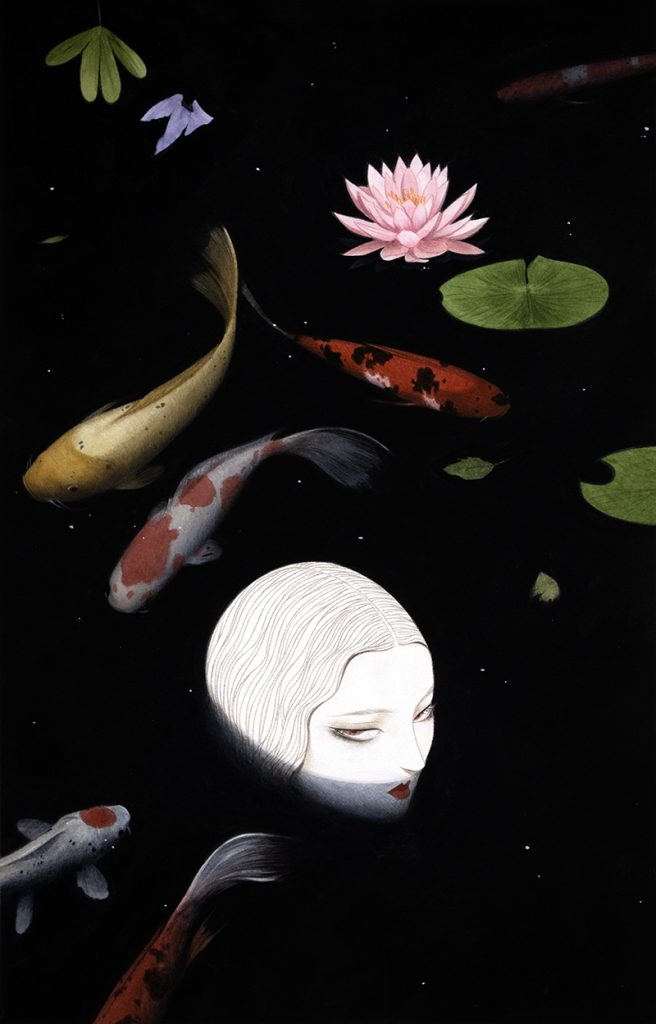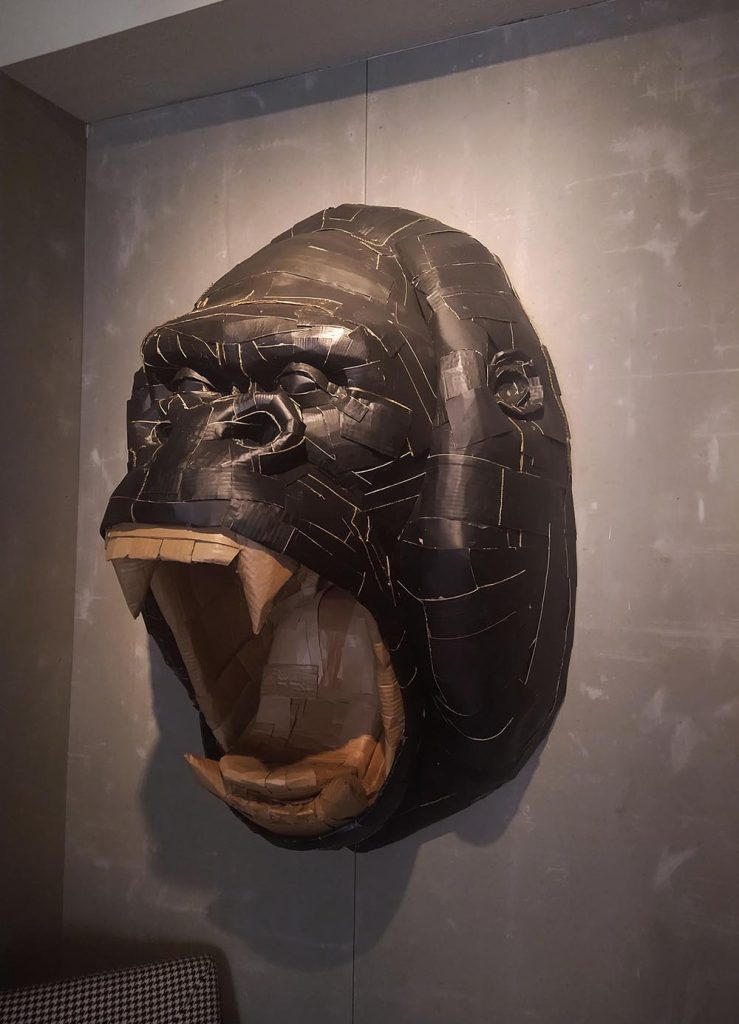
This weekend will see the final showing of Jessie Rose Vala‘s thought-provoking ‘Future Teller,’ at San Francisco’s Ever Gold Gallery. The solo showing, the artist’s first in San Francisco since 2002, presents an immersive and site specific series of ceramic and graphite works. Curator Gabe Scott recently sat down with the artist for a quick interview on her show, which ends this Saturday, November 26th.

Every aspect of your installations is very meticulous – although the drawings could comprise an exhibition on their own, it feels like each actual ‘piece’ you make is the complete installation itself. Talk a little about how much patience it requires to complete an entire project like this and the different elements involved.
Yes it does take a lot of patience. This is one of the aspects I love about it. It is similar to working on a gigantic puzzle, except the end result is more of a gut feeling then a perfect picture on a box. I relate to the process of working on different pieces that then complete a whole. I have worked many different jobs being an artist. Many of them revolved around piecework, jewelry, mosaic, large restaurant interiors, and textiles…so this is my training. I use many materials. In the last years I have been using paper as a sculptural element. This requires hours and hours of cutting and sometimes layering. I love the fragility of paper. Ceramics is also one of my loves. It involves many steps, from hand building to glazing. My favorite materials are ones that I can jump right in with. They are pliable and quick to form. As compared to wood or metal. The idea or concept of the show usually has a long history. Many times certain elements are inspired from my childhood, but then form on a broader story that often relates to mythologies and common symbols. I really do work in layers conceptually as well as with materials. Layers bring a richness and mystery into the pieces.

Do you find yourself always using the female form for characters in your mythologies? Is the use of the female form for you in these contexts self-referential?
I do always use the female as well as animals. I think it is slightly self-referential. It is easier to work out ideas on the female form partly because that is what I am so I feel close and comfortable with it. Beyond that I am mostly inspired by the feminine and also feel we need the feminine principles stronger in our culture and environment. We all have the masculine and feminine principles with in us. It just happens to be we are at a time where the feminine is oppressed. So this is a small way I can promote the feminine.

You journey back and forth between isolated rural settings and bustling urban areas regularly. How does this balance affect your work, creative process and work schedule for projects like Future Teller?
This project spanned 3 years. Partly because so many of the pieces were large so I would work on pieces of them for a few weeks here and there, then put it on the back burner while I was working on other projects. I started it in Portland Oregon, worked on it in eastern Oregon, Wyoming, and Brooklyn. All this moving around definitely slowed down the process. I usually do not work on a show in so many places. That being said it was a good experience and added to the work. The time in between working on the show gave me a chance to see it in a different way, meaning I may have had some sense of how the apple tree was going to be built or designed then after a few months when approaching it again in a new setting I came upon a completely different solution. So the expanse of time gave me a chance to see the work in a different way or collect or build more elements that would be integrated into the final pieces.
I am the most focused working in isolated rural settings and small towns. For some reason the slower pace makes me work faster and feel more inspired. Big cities tend to be hectic for me. The flipside to this is I seem to do more collaborative projects in big cities, which is fun and takes me out of being so isolated when working on art.

What projects and or travel plans lie in the immediate future for you?
I am going to the Southwest for a few weeks in November. First I am going to see a friend Xaviera Simmons in Salt Lake where she is installing a show of hers at the Utah Museum of Find Arts. After this I plan to join the Black Mesa Caravan. This is very exciting and something I wanted to do for many years. It is through Black Mesa Indigenous Support. Peabody Coal Company has been trying to gain control of Black Mesa for coal for many years. This is sacred land to the Dine and is on the reservation.
In December I may have job in Florida with my friend and main collaborator Kelie Bowman, then to LA for a show with Cinders and amazing artist Rob Doran at Synchronicity Space.
Light Hits (Kelie Bowman and I) is going to take our video/animation on a small west coast tour with a live soundtrack. So this winter is about travel. I am trying to escape snow and ice this time around. Next summer I hope to have a large studio again and I am sure I will be ready to stay still for a while.

What places geographically are most important to you as far as strengthening the ethereal aspects of your work? Where do you feel most inspired and most productive?
Definitely the West Coast and the South West. Traveling to other countries also gives me a huge surge of inspiration, optimism and possibilities. Rugged dramatic landscapes are so inspiring. The more I can get out to these or be surrounded by the them the better I generally feel. One of my favorite of all places is the four corners. The Four Corners opens the doors wide open, a truly expansive place in every sense of the word.
Like most people I have anxiety when I am in natural surroundings this calms this. I feel happier so I have more energy to give to what I care I about.







